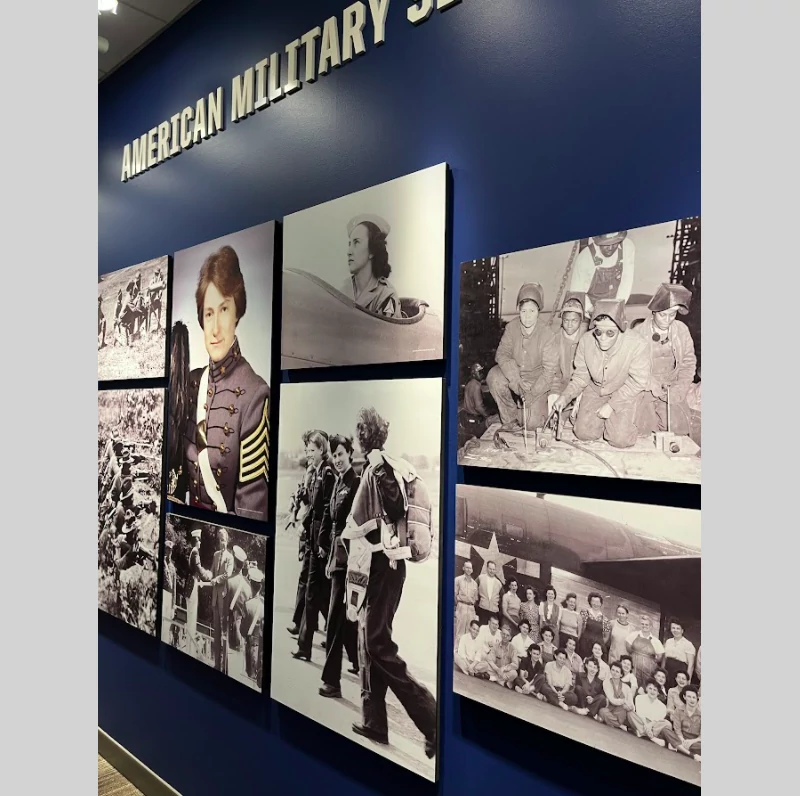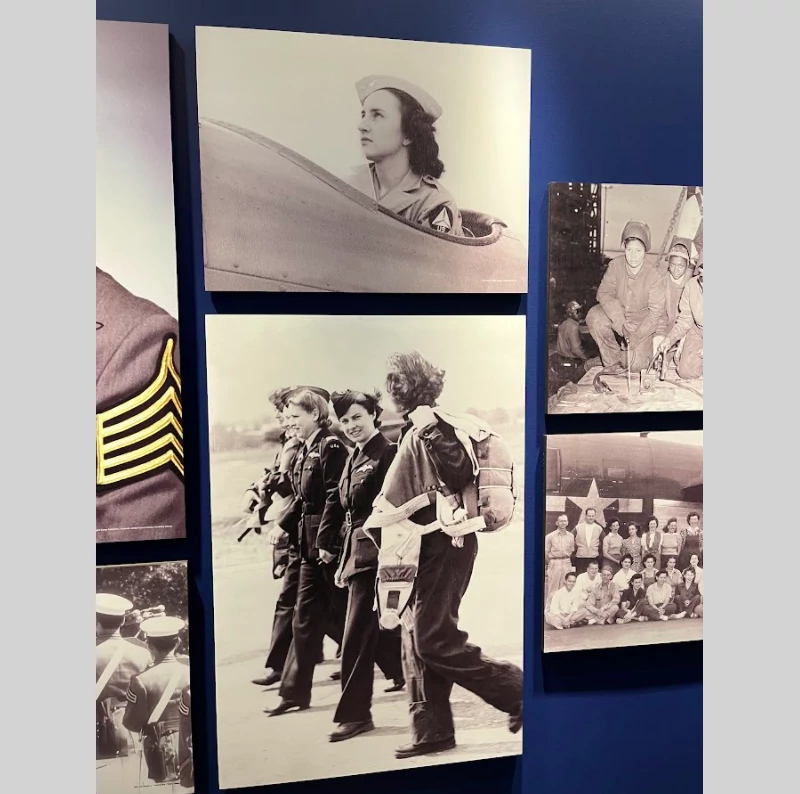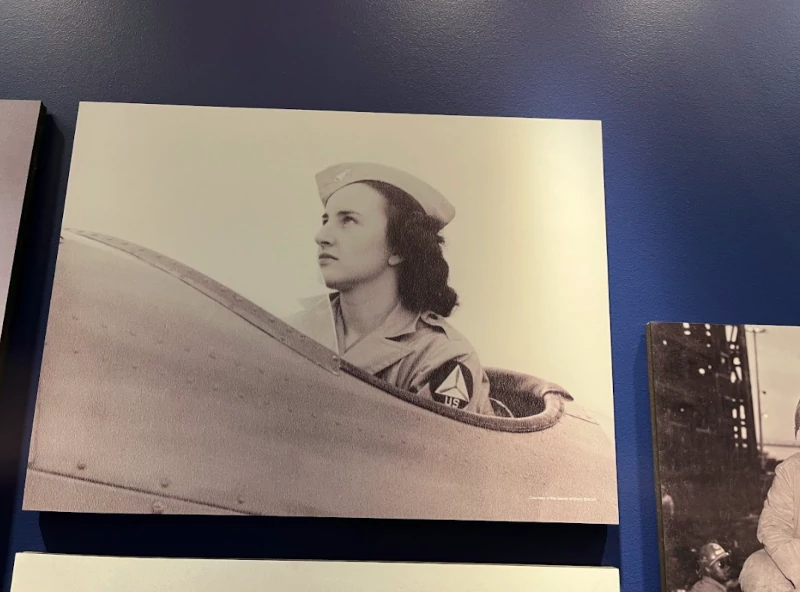
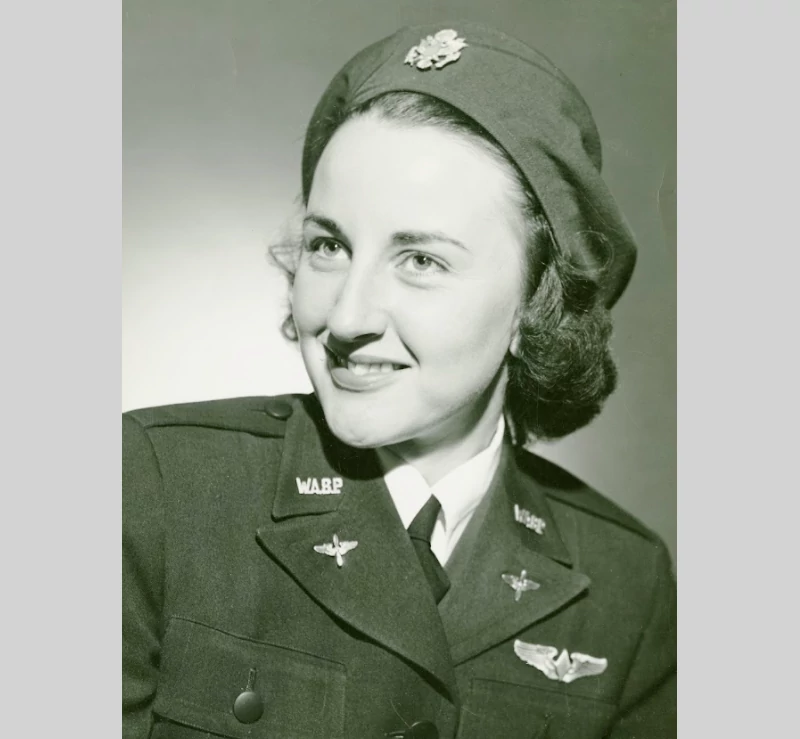
Photograph of Women Airforce Service Pilot (WASP) Doris Bristol, taken at Casper Army Airbase, c. September-December 1944. Courtesy Doris Bristol Tracy family.
By Douglas R. Cubbison, Curator, National Museum of Military Vehicles
Doris Bristol - Wyoming's only Women Air Force Service Pilot (WASP)
Today, Casper/Natrona County International Airport is the only international airport in the state of Wyoming. It began its existence as Casper Army Airbase, constructed and placed into service by the U.S. Army Air Force in 1942. During World War II, it served as a B-17 and B-24 heavy bomber training base that eventually qualified 1,600 bomber crews and nearly 20,000 airmen for combat, primarily in the European Theater of Operations. Among all these airmen, only one Women Airforce Service Pilot (WASP) was permanently stationed at Casper, although numerous other WASPs piloting transient aircraft passed through the airbase throughout the war years.
By September 1942, the U.S. Armed Forces realized that they were facing a shortage of trained, qualified pilots. One of the nation's most experienced and well-known female pilots, Jacqueline "Jackie" Cochran, proposed an organization of female pilots to serve in non-combat roles, to free up male pilots for combat duties. Simultaneously, Nancy Harkness Love proposed a similar program focused on women pilots ferrying aircraft. The two competing organizations were known as the Women's Auxiliary Ferrying Squadron (WAFS), and the Women's Flying Training Detachment (WFTD). Both organizations began qualifying women pilots in November 1942,and they were combined into the Women Airforce Service Pilots (WASP) in August 1943.
WASP adopted a patch in 1943 that featured the female gremlin Fifinella. It was drawn by Walt Disney, formally donated to the WASPs, and became the official WASP mascot.
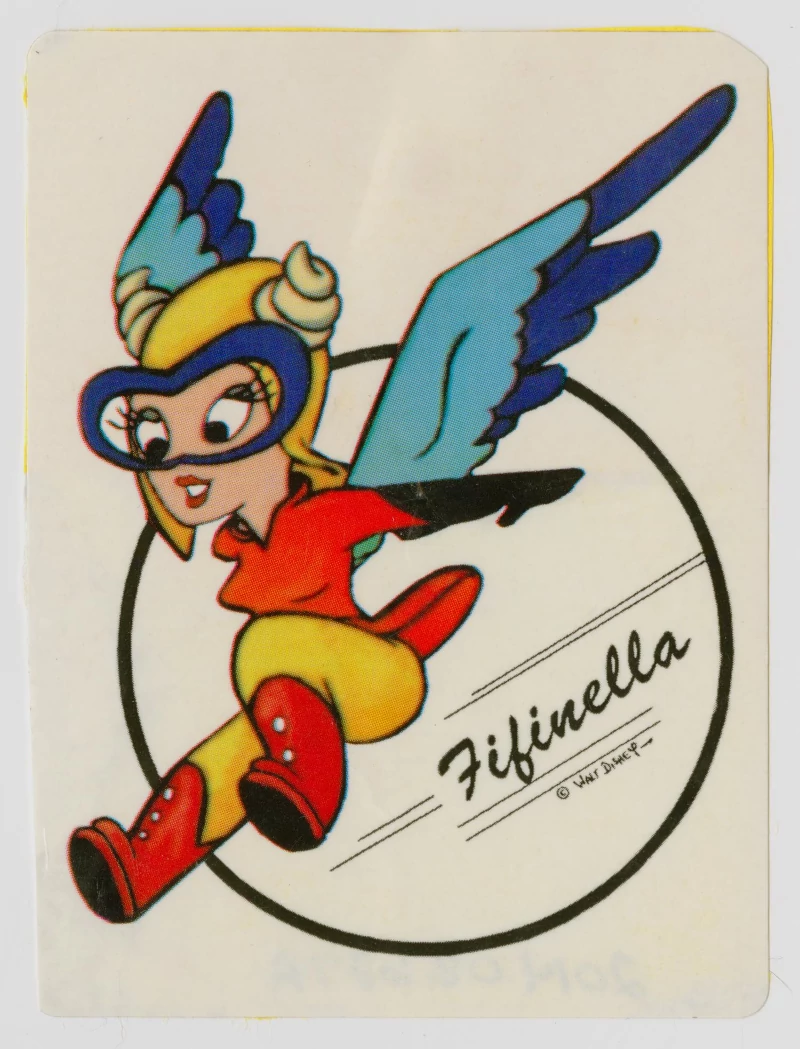
Doris Virginia Bristol was born on March 6, 1920, in the small town of Savannah, Missouri. Her father ran a general store in Maryville, the county seat of Nodaway County, Missouri, located approximately 35 miles north of the city of St. Joseph. Doris graduated from Maryville High School in 1938 and worked at her father's store. Although the most famous aviatrix in the nation, Amelia Earhart, was from Atchison, Kansas, just downstream on the Missouri River from St. Joseph, Doris never mentioned that she was inspired by her. Rather, as a young girl, she had the opportunity to watch airplanes and was fascinated by them. When her father got her a ride in an airplane at the age of nine, she was hooked.
On August 28, 1940, a Civilian Pilot Training Program opened at Northwest Missouri State University in St. Joseph. Initially established in May 1939, this program was sponsored by the U.S. Government to increase the number of civilian pilots in the nation. The onset of World War II in Europe highlighted the requirement for more trained pilots in the United States, and the military ramifications of the project resulted in its increase in 1940. Doris was one of the first enrollees at what was known as the Maryville School of Aeronautics, and one of only two Missouri women who received their pilot wings through this program. Doris was awarded her Private Pilot Certificate on February 25, 1941; and she shortly thereafter joined the Missouri Civil Air Patrol as a Pilot.
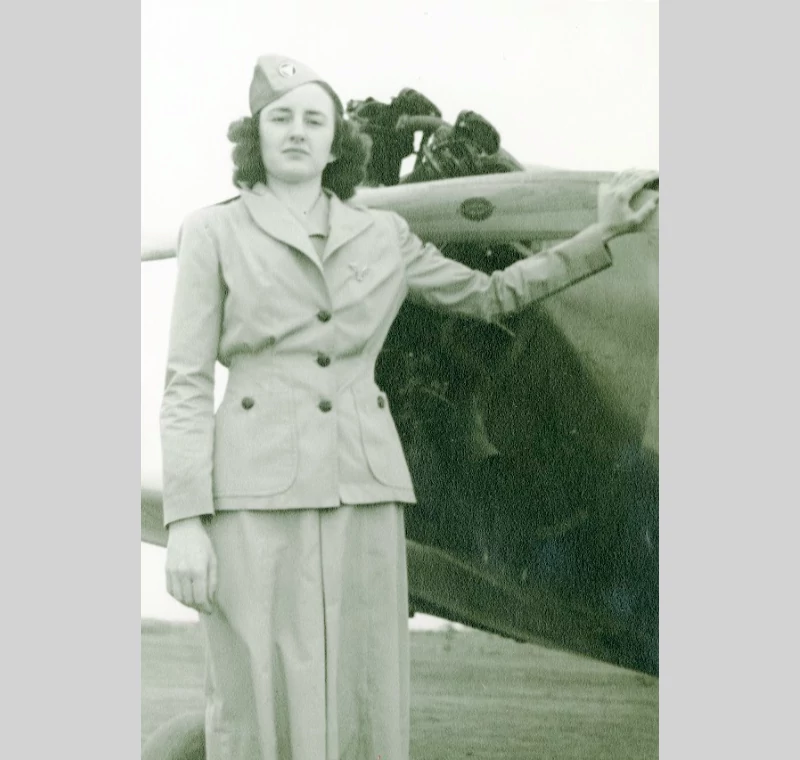
When Doris learned that an organization called the Women's Auxiliary Ferrying Squadron was seeking qualified female pilots to contribute to the war effort in 1942, she immediately responded. When the various women pilot programs were organized, only lady pilots with 200 hours of flight time and private pilot licenses were accepted. Almost immediately this requirement was reduced, and shortly afterward was eliminated entirely. Young Doris Bristol from Missouri benefited from the initial alteration, as she initially did not have sufficient flying hours to qualify but was accepted early in 1943 when the requirement was eased. She was ordered to report for training to Avenger Airfield in Sweetwater, Texas on March 24, 1943. Doris graduated with WASP Class 43-W-5 on September 11, 1943. Her initial assignment was as an Advanced Ferry Pilot at Love Army Airfield, Dallas, Texas.
In late 1943 she attended training on the B-17 at Lockbourne Army Airbase in Columbus, Ohio. However, as with many other female pilots, the manual controls of this heavy bomber were too demanding for Doris to fly. Subsequently, she became qualified to fly numerous aircraft, including B-24 Liberator heavy bombers.
On September 11, 1944, Doris was transferred to the 211th Army Air Force Base Unit, part of the 2nd Air Force at Casper Army Airfield, Casper, Wyoming. With one brief absence during a portion of October to attend an instrument flight training course at Sweetwater, Doris spent four months at Casper and concluded her WASP career there. While at Casper She flew as a Co-Pilot performing test flights on B-24s before they were cleared for training crews; and flew airplanes pulling aerial targets for the B-24 gunners to fire upon. Housed in the Nurses Quarters, she dined at the nurse's mess at the Station Hospital and at the Field Officers Mess. A December 1944 official report noted that "Miss Bristol has shown herself very adaptable and her conduct at this station has been beyond reproach." It further concluded, "...there are numerous duties which could be assigned this type of personnel [Miss Bristol as a WASP] which would release many pilots for combat duty." When the WASPs were disbanded by the Army Air Force on December 20, 1944; Doris was discharged and returned home to Maryville.

After the war, Miss Bristol moved to La Veta, Colorado, married, and lived there until her death in 2010. While in her 80's she had an opportunity to fly in an AT-6 Trainer and surprised the pilot when she asked him to perform acrobatics!
The National Museum of Military Vehicles recognizes the early service and sacrifices of female pilots during World War II by a photograph in Corridor 108 of Doris Bristol, the only WASP pilot to be permanently assigned to Wyoming during World War II.
